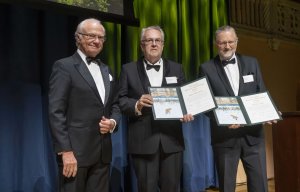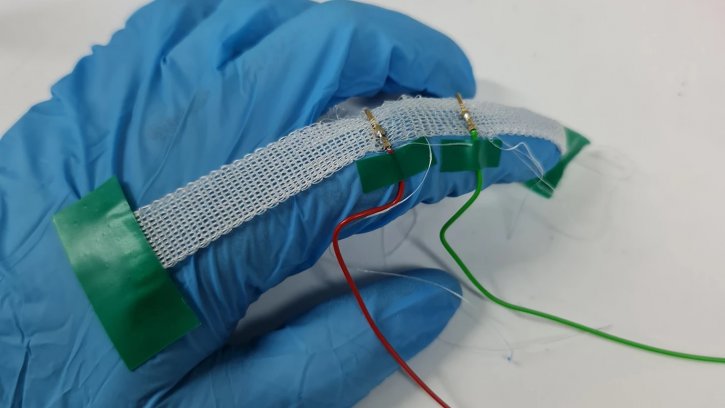
Recognition for new route to cellulose fibres
University of Borås investigating components for haptic stimulation garments.

15th June 2022
Innovation in Textiles
|
Boras, Sweden
Ionically conductive fibres (ionofibres) are proving of increasing interest in the field of electronically-conductive smart fabrics by achieving higher flexibility and durability and matching the conduction of the human body.
Textile batteries, displays and muscles are all potential end-uses for these materials.
Within the Weafing Project at the University of Borås in Sweden, doctoral student Claude Huniade is working to produce conductive yarns without conductive metals, as part of the larger goal of developing new garments for haptic stimulation comprising flexible and wearable textile actuators and sensors.
“My research is about producing electrically conductive textiles by coating non-metals sustainably on commercial yarns,” Huniade says. “The biggest challenge is in the balance between keeping the textile properties and adding the conductive feature.”
Just like salt water, ionic liquids conduct electricity and are a more stable electrolyte, since nothing evaporates.
“As a coating, the processing is important since textile manufacturing can be harsh on textile fibres, especially when upscaling their use,” Huniade explains. “The fibres must also be manufactured into wovens or knits without damaging them mechanically, while retaining their conductivity. Surprisingly, the coated yarns produced were even smoother to process into fabrics than the commercial yarns they were made from.”

Ionofibres could be used as sensors since ionic liquids are sensitive to their environment. They can sense humidity changes, for example, but also any stretch or pressure they are subjected to.
“Ionofibres could truly shine when they are combined with other materials or devices that require electrolytes,” Huniade says. “They enable certain phenomena of liquids to be feasible in air in lightweight materials. The applications are multiple and unique, including as textile batteries displays and muscles.
More research is still needed to combine the ionofibres with other functional fibres and to produce the unique textile devices, but while less conductive than electronically conductive fibres, the ionofibres have the potential to impart entirely new properties.
“They actually match how electricity is present in nature much better than electronically conductive fibres,” Huniade concludes.

Business intelligence for the fibre, textiles and apparel industries: technologies, innovations, markets, investments, trade policy, sourcing, strategy...
Find out more